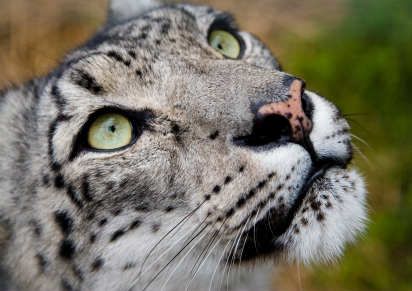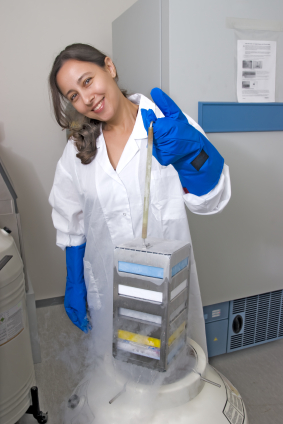
As an animal lover who has been passionate about genetic conservation approaches since I first heard about the “Cheetah papers” over twenty years ago, I am excited at the work highlighted in two papers published in the last year that have begun the process of applying induced pluripotent stem cell (iPSC) technologies to endangered animals (1,2).
Traditional conservation approaches have focused on saving habitats (and by default the animals that live there) versus any kind of aggressive biological intervention. For some highly endangered species these efforts at habitat preservation are too little too late, as there are often too few animals still surviving in the wild. Additionally, it is likely that not all of the surviving animals are reproductively viable.
Unfortunately, captive breeding programs have had varied success. Some species are difficult to breed under captive conditions and the availability of breeding stock is limited and often geographically scattered in zoos and wildlife preserves. For these reasons, different approaches are needed. These have included such things as artificial insemination and implantation of in vitro fertilized embryos (i.e., test-tube embryos). While these methods allow animals located in different zoos or wildlife preserves to produce offspring, they still require access to reproducible viable donor animals. For some animals, collecting gamete (sperm or egg) samples is difficult. Add to this the fact that these donor animals are often not very genetically diverse and the survival of these species becomes even more tenuous.

Fortunately, institutions have collected and maintained frozen “zoos” with samples of gametes as well as other viable cells from hundreds of species and thousands of individual animals (e.g., San Diego Zoo Institute for Conservation Research (3). These frozen samples act as reservoirs or genetic “banks” for some of the most highly endangered animals. Among other things, these banked cells could one day be used to create iPSC lines. Just like embryonic stem (ES) cells, iPSCs generated from somatic cells are capable of unlimited expansion and differentiation into multiple cell types. Not only could iPSC lines generated from endangered animals be banked, they could also be used as the reprogrammed donor cell to assist in nucleus transfer programs. In the future it might be possible to induce them in vitro to differentiate into gametes, or use them in vivo to produce whole animals via tetrapolid complementation. This last piece isn’t all that far-fetched, given that iPSCs already have been used in conjunction with tetraploid blastocysts complementation to produce viable offspring in mice (4,5).
In a paper published by Inbar F. Ben-Nun and colleagues in October 2011(2), iPSC technology was applied to two endangered species of mammals: the nearly extinct northern white rhinoceros (Ceratotherium simum cottoni) and the highly endangered African primate, the drill (Mandrillus leucophaeus). For both species, cryopreserved fibroblast cell (cells that synthesizes the extracellular matrix and collagen) lines were obtained from the Frozen Zoo at the San Diego Zoo Institute for Conservation Research. The iPSC lines were developed using retrovirus vectors expressing four human transcription factors (POU5F1, SOX2, KLF4 and MYC). For both species the iPSC lines met the critical criteria of having the integrated exogenous sequences of the reprogramming factors silenced and the endogenous pluripotency-associated genes induced. Both the drill and the northern white rhino iPSC lines also formed embryoid bodies in vitro with differentiated cells that expressed markers for the ectoderm, mesoderm and endoderm (the three germ layers). This tri-lineage differentiation was confirmed for the drill iPSC lines through the formation of teratomas in sever combined immunodeficient (SCID) mice following injection of iPSCs. The mitochondrial gene encoding cytochrome b was sequence to confirm that the teratomas were from drill and not mouse origins.
As exciting and the work done by Ben-Nun, I have to confess that it was the paper published in January of this year that had iPSCs truly capturing my heart. In this publication, R. Verma and colleagues created iPSC lines from ear fibroblast cells of snow leopards (Panthera uncial)(2). Leaving aside my love of these beautiful cats, the authors found that including an additional human transcription factor (NANOG) in the retrovirus vectors used to induce iPSCs significantly improves pluripotency for snow leopards. Only the five-factor (OCT4, SOX2, KLF4, CMYC and NANOG) induction resulted in iPSC colony survival past passage four. Although there was silencing of three of the human transgenes, two of the transgenes associated with proliferation (CMYC and KLF4) continued to be expressed leading the authors to conclude that this was incomplete reprogramming of the proliferation capabilities of the snow leopard iPSCs. Despite this incomplete programing, injection of the snow leopard iPSCs into SCID mice resulted in teratoma formation consisting of cells representative of the three germ layers and the origin of the teratoma cells was confirmed to be snow leopard iPSCs.
Although I don’t think that we are at the point where we need to start knitting pink or blue rhino and leopard booties, the work described in these two papers offers hope that endangered species can be saved and maybe some day we will be able to reintroduce animals into areas where their habitat has been preserved or reestablished.
References
- Ben-Nun IF, Montague SC, Houck ML, Tran HT, Garitaonandia I, Leonardo TR, Wang YC, Charter SJ, Laurent LC, Ryder OA, & Loring JF (2011). Induced pluripotent stem cells from highly endangered species. Nature methods, 8 (10), 829-31 PMID: 21892153.
- Verma, R. et al. (2012) Inducing pluripotency in somatic cells from snow leopard (Panthera uncial), an endangered felid. Theriogenology 77, 220-8.
- www.sandiegozooglobal.org/what_we_do_banking_genetic_resources/frozen_zoo/the_frozen_zoo (accessed April 19, 2012).
- Kang, L. et al. (2009) iPS cells can support full-term development of tetraploid blastocyst-complemented embyos. Cell Stem Cell 5, 135-8.
- Zhao, X-Y. et al. (2009) iPS cells produce viable mice through tetraploid complementation. Nature 461, 86-90.
Kelly Grooms
Latest posts by Kelly Grooms (see all)
- Discovery of Protein Involved in TDP-43 Cytoplasmic Re-Localization Points to Potential Gene Therapy for ALS and FTD - April 2, 2024
- Dynein Motor Proteins Could Be the Moving Power Behind Cancer Metastasis - February 16, 2024
- Cyanobacteria Identified as Cause of Elephant Mass Mortality Event - January 11, 2024
